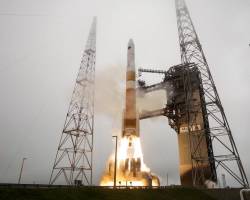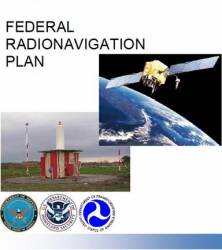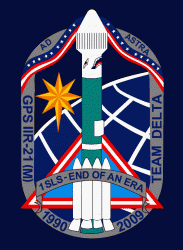 before launch.jpg) Members of the 45th Launch Support Squadron, along with the 45th Range Management Squadron’s GPS team, pause in front of the GPS IIR-20 satellite atop its Detla II booster prior to its launch March 24. (Lockheed Martin photo/Bruce Johnson)
Members of the 45th Launch Support Squadron, along with the 45th Range Management Squadron’s GPS team, pause in front of the GPS IIR-20 satellite atop its Detla II booster prior to its launch March 24. (Lockheed Martin photo/Bruce Johnson) U.S. Air Force officials have confirmed that signal anomalies on the latest GPS satellite — IIR-20(M), also identified as SVN49/PRN01 — are related to the interface to the new L5 payload also on board.
But the problem appears fixable.
The spacecraft has remained is still in early orbit checkout since its launch on March 24 and has not been introduced into the operational constellation.
A dedicated response team of Air Force and contractor experts are wrapping up their investigation of the cause of the L1 signal anomalies, which were detected on April 9. The signal distortion was initially observed as an elevation-dependent bias in ranging measurements from GPS monitor stations.
U.S. Air Force officials have confirmed that signal anomalies on the latest GPS satellite — IIR-20(M), also identified as SVN49/PRN01 — are related to the interface to the new L5 payload also on board.
But the problem appears fixable.
The spacecraft has remained is still in early orbit checkout since its launch on March 24 and has not been introduced into the operational constellation.
A dedicated response team of Air Force and contractor experts are wrapping up their investigation of the cause of the L1 signal anomalies, which were detected on April 9. The signal distortion was initially observed as an elevation-dependent bias in ranging measurements from GPS monitor stations.
The Air Force team has identified several parameters in the GPS IIR-20 (M)’s navigation message that can be adjusted to correct the bias and bring the satellite into compliance with the GPS performance standards. Over the next several months the team will be testing, analyzing, and evaluating any potential effects that the corrective actions may have on both military and civil GPS user equipment.
According to an Air Force spokeperson at the Space and Missile Systems Center, Los Angeles Air Force Base, the test strategy will implement engineering analysis, modeling and simulation, and testing of real-life GPS receiver equipment to the greatest extent possible to ensure that GPS users experienced no inadvertent effects.
The Air Force expects to complete testing around the October 2009 timeframe. At that time, GPS IIR-20(M) will be introduced as a healthy satellite into the operational constellation, if no major issues are observed during the receiver testing campaign. Users will be kept informed of the status of GPS IIR-20(M) via standard Notice Advisory to Navstar Users (NANU) messages.
The GPS constellation remains healthy, stable, and robust with 30 operational satellites. The Air Force has high confidence that no related concerns exist regarding the remaining IIR vehicles or the upcoming GPS IIR-21(M) mission, which currently has an August 2009 launch opportunity.





